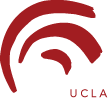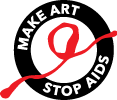
The story of MAKE ART/STOP AIDS spans from Kolkata to Los Angeles, Mexico City to Rio de Janeiro, and from Johannesburg to Mumbai.


A joint project of MAKE ART/STOP AIDS and the Centre for Media and Alternative Communications (CMAC), ArtMoves opened to popular and critical acclaim at the launch of the Red Ribbon Express train in New Delhi on December 1, 2007, World AIDS Day. Since that time, the project has traveled to the XVII International AIDS Conference in Mexico City, August 2008, Dilli Haat at New Delhi in 2009, and Chennai in 2009 and 2010. Better described as a moving event or “happening” than an exhibition, ArtMoves is a fully portable, arts-based AIDS intervention conveyed and displayed on retrofitted auto-rickshaws—or other local conveyances.
The artworks offer a window into the work of artists confronting AIDS worldwide, representing India, Brazil, South Africa, and the United States. Each nation exemplifies a distinct set of socio-cultural conditions and artistic responses to the epidemic. Thus, ArtMoves places special emphasis on international dialogue, emphasizing such issues as treatment inequality and the importance of appropriate governmental response.
The idea for ArtMoves emanated directly from India. The Art & Global Health Center had organized a museum exhibit to educate and raise awareness about issues related to HIV/AIDS. It was realized, however, that in most Indian locations museum exhibits are less than ideal, on account of their high cost and exclusivity. A cheaper, more accessible alternative was necessary.
A workshop of artists and activists in New Delhi, supported by UNESCO, led to the idea of a portable exhibition to be delivered on streets and in villages, and made accessible to the wider public regardless of social class or literacy. The idea was not to limit the exhibition to a handful of gallery visitors, but to give it wheels, quite literally.
ArtMoves made a successful debut on World AIDS Day 2007 in New Delhi. Commenting on the initiative, Director General of the National AIDS Control Organisation (NACO) said, “What a wonderful way of communicating (information about) HIV/AIDS to people…” Since then, it has been further refined, made more mobile, and adapted for international translocation. Each new engagement sows the seeds of arts-activism among a new and diverse audience.
In December 2008, CMAC delivered a mobile ArtMoves workshop to Jamia Millia Islamia, a prominent university in New Delhi that offers degrees in art. A bamboo-and-metal version of ArtMoves was exhibited there, and students produced their own art works for display. This experience with student artist-activists has led to an expansion of the workshop model at other institutions in India and beyond, as well as prospective experiments encompassing digital media and cell phone technology. The project also aims at sensitizing public health experts on the efficacy of the arts to educate and inspire, bringing the arts and public health on one platform. Art moves. ArtMoves.
Acknowledgements
ArtMoves gratefully acknowledges the support and guidance of the National AIDS Control Organisation (NACO) in the conceptualization and implementation of the exhibition. Funding courtesy UNAIDS, UNESCO and the Ford Foundation.
ArtMoves has also received generous support from Bajaj Auto Limited and from the Delhi Network of Positive People (DNP+), whose members served as on-site educators at the inaugural 2007 display. Bajaj-Motomex in Mexico supported ArtMoves at the XVII International AIDS Conference by providing the autorickshaws. And of course the participating artists themselves who have come forward so willingly and made this possible: Jiten Thukral & Sumir Tagra, India; Adriana Bertini, Brazil; Daniel Goldstein, United States; Gideon Mendel, South Africa; Penelope Siopis, South Africa; Chandan Nagar Light Collective, India; Parthiv Shah, India; Achal Kumar, India; Natasha Preenja & Aastha Butail, India; Ranjit Sinha, India
The multiple Red Ribbons using a range of mediums were created by Uttam Kar, Dolon Kundu, Swarna Chitrakar, Chandra Sutradhar, Roshni Tankariwala, Seema Das/Bina De, Bobby, Nabo Pal, Metiaburuz workers, Firozabad Artisans, Women's Friendly NGO
CMAC, MAKE ART/STOP AIDS’s Delhi-based partner, works with media and art to create innovative communication campaigns and education materials to promote public awareness and dialogue across a range of social issues.